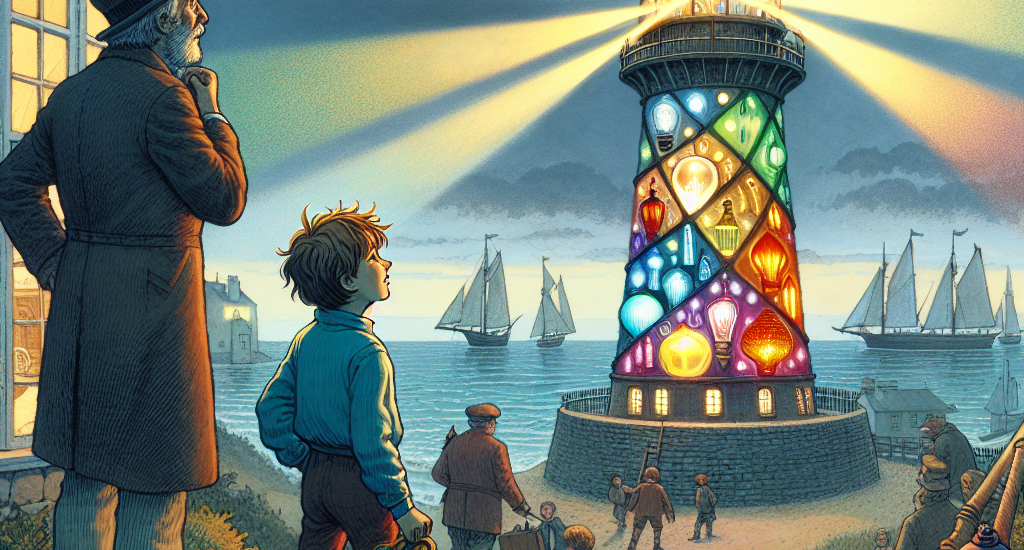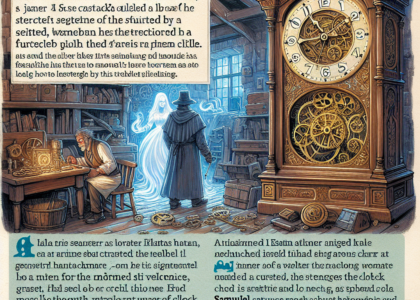Title: The Last Light
Once upon a time, in a small town nestled between mountains and the sea, lived a boy named Leo. Leo was an ordinary boy with an extraordinary fascination for lighthouses. The town’s lighthouse, standing tall and solitary on the cliff edge, was his favorite spot.
One day, the lighthouse keeper, an old man named Mr. Thorne, fell sick. Without the keeper, the lighthouse’s light began to dim. Ships began to lose their way, and the town’s fishermen couldn’t venture far into the sea, which cast a gloom over the town.
Leo, who had often helped Mr. Thorne with minor duties, decided to take matters into his own hands. He climbed up the winding stairs of the lighthouse, all the way to the top. He tried his best to light the giant lamp, but to his dismay, the flame flickered, sputtered, and went out. The lamp was too big, and Leo was too small. But he wasn’t ready to surrender. He remembered a lesson Mr. Thorne had taught him: “A lighthouse doesn’t shine for itself. It shines to guide others.”
Armed with determination, Leo descended the lighthouse and sprinted towards the town. He gathered all the townsfolk and explained his plan. He asked everyone to bring a lamp, any lamp they could spare. The townsfolk, spurred by the young boy’s enthusiasm, complied. They gathered their lamps and followed Leo to the lighthouse.
As they reached the lighthouse, Leo directed everyone to place their lamps around the base of the lighthouse. The townsfolk were puzzled but did as he instructed. Once all the lamps were placed and lit, Leo asked the townsfolk to cover each with a piece of colored glass from the broken panels of the lighthouse’s lantern room.
The result was magical. The many lamps, each shining through a different colored glass, created a beautiful, multicolored beacon. The light wasn’t as strong as the lighthouse’s original beam, but it was bright enough to guide the ships and fishermen on the sea. The townsfolk cheered, their gloom replaced by awe and admiration for the boy who had guided them just as the lighthouse guided the ships.
Days later, when Mr. Thorne recovered, he was amazed to see the spectacle Leo had created. He thanked Leo, saying, “You’ve taught this old keeper that even when the biggest light goes out, many small lights can still guide the way.”
Leo, with a satisfied smile, looked up at the lighthouse. The last light hadn’t gone out; it had just taken a different form. This experience had shown him that sometimes, extraordinary situations call for extraordinary solutions, a lesson he would carry with him always.
The town returned to normal, but the memory of the multicolored beacon remained vivid. The lighthouse resumed its duty, and Leo, having proven his courage and creativity, became the official assistant to Mr. Thorne. The townsfolk often reminisced about the time when their small lamps guided the way, reminding them that every light, no matter how small, holds the power to guide those who are lost.
And so, Leo’s tale became a shining beacon of hope, illuminating the small town nestled between the mountains and the sea.




